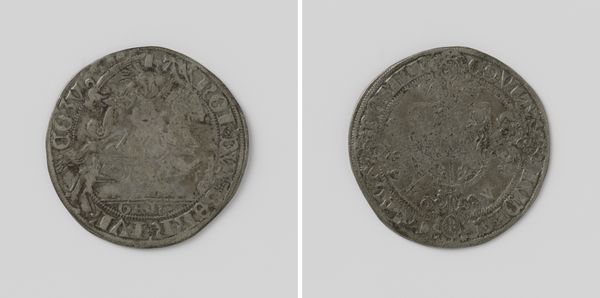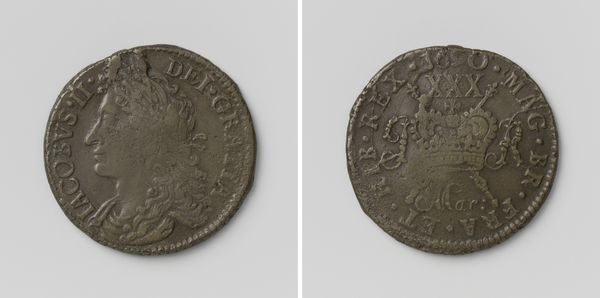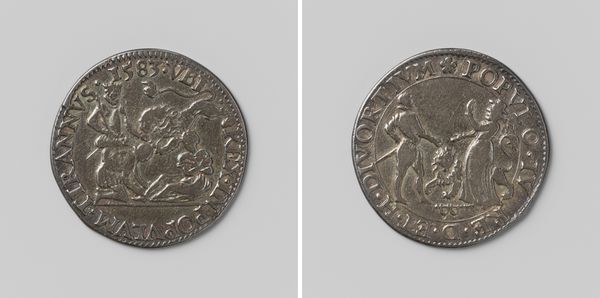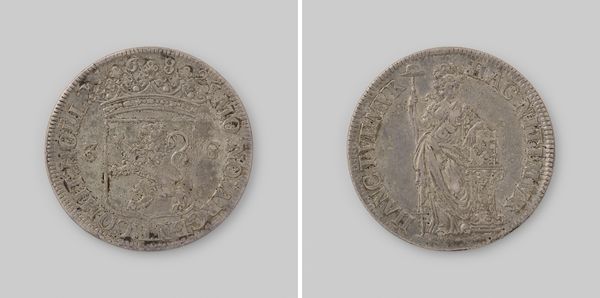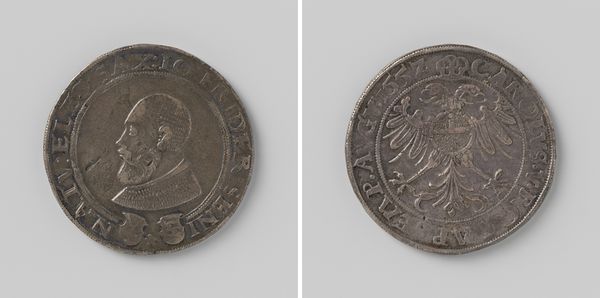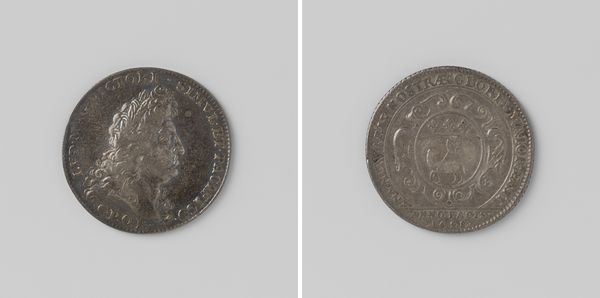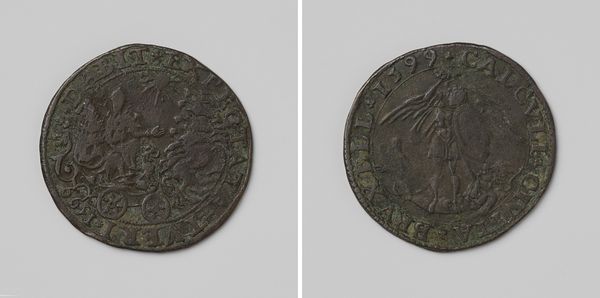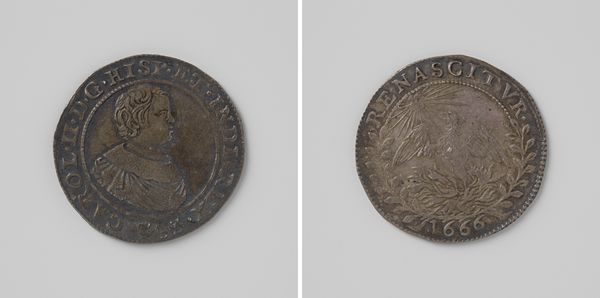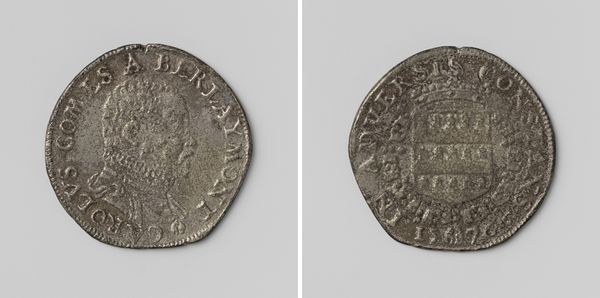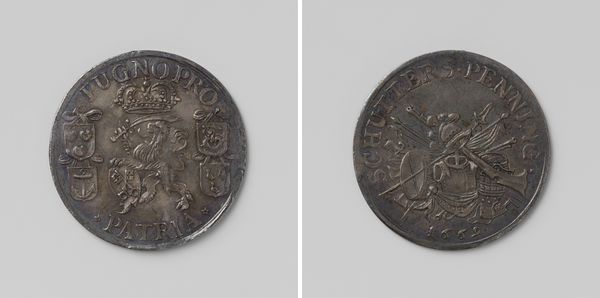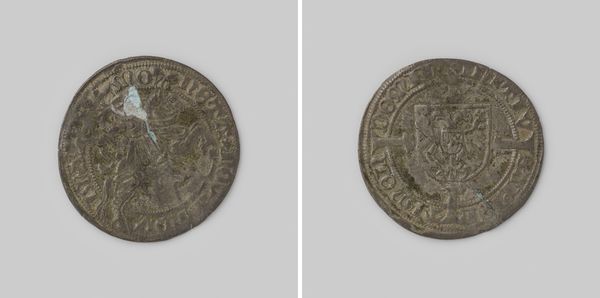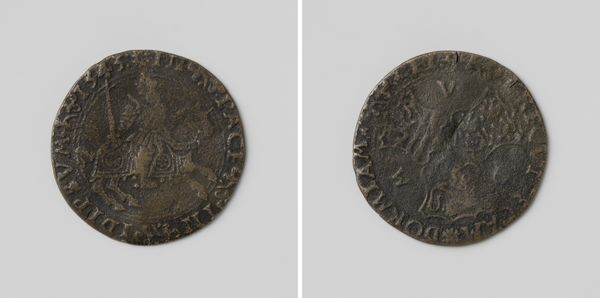
Dimensions: diameter 2.5 cm, weight 3.63 gr
Copyright: Rijks Museum: Open Domain
Curator: Here we have an engraving on metal depicting "Karel V, Duits keizer verleent het muntrecht aan Augsburg," or Charles V, Holy Roman Emperor, Granting Coinage Rights to Augsburg, created around 1523. Editor: It’s incredible to see so much detail rendered on such a small scale. The cool, silvery tone evokes a sense of history and weight. The engraving seems worn but strangely, it makes me feel like I'm touching history, something very tactile in spite of its remove. Curator: Absolutely. Coins of this period offer incredible insight into the dynamics of power. The granting of coinage rights was no small matter, representing economic and political autonomy. Note how this act reinforces Augsburg’s standing within the Holy Roman Empire. This tells a larger narrative, a story of localized authority beneath imperial control and how trade intersected with allegiance during the Renaissance. Editor: You know, the circular format combined with the central image, it almost feels like looking through a porthole to another time, an image that oscillates between symbolic power and tangible reality. Curator: It's a delicate balance. This engraving not only portrays a historical event, but also signifies an emperor’s role in shaping the economic landscape. It speaks to broader themes of identity and control. In a postcolonial context, we could question what is lost to Augsburg via that 'granting', what invisible threads of power limit the act and to whose advantage this grant plays out. Editor: The medium also adds complexity, doesn't it? I can just imagine people exchanging goods, but also receiving and then holding images of governance. The engraving materializing the economy into almost abstract imagery that can still be felt in its physical form. It's a fascinating conflation of substance and symbolism. Curator: Precisely. I believe analyzing this metal engraving of Charles V through an intersectional lens uncovers layered insights into economics, history, and power dynamics in the 16th century, offering lessons relevant to contemporary socio-political concerns. Editor: Seeing this work reminds us that the most unassuming objects, like this coin, can reveal hidden systems of organization and influence. There's always more than meets the eye, especially with great artistry.
Comments
No comments
Be the first to comment and join the conversation on the ultimate creative platform.
